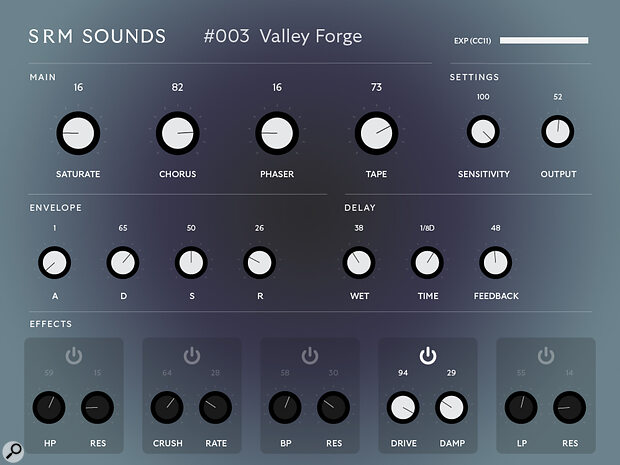Rating: ★ ★ ★ ★ ★ 5/5 Stars
Named after the spaceship in Silent Running, Douglas Trumbull’s 1972 sci‑fi cult classic, Valley Forge by SRM Sounds is a Kontakt library built for composers and sound designers looking to explore the space between the organic and the synthetic. It’s a focused, atmospheric toolkit with a clear cinematic angle — particularly for those working in sci‑fi, psychological thrillers or abstract soundscapes.
At its core is a 15‑player timpani ensemble recorded at Studio Richter Mahr, home base of composer Max Richter. Across six instruments, the library covers everything from traditional hits and rolls to experimental playing techniques: superballs, clusters, bowed effects and processed noise. It’s rich in detail, and often more textural than percussive — ideal for tension and evolving cues.
Where Valley Forge really distinguishes itself is in its hybrid design. The acoustic material is pushed through analogue processing chains, producing drones and atmospheres that feel unstable and alive. One instrument is entirely dedicated to this: a drone generator built around a randomisation engine that constantly mutates the sound, creating evolving layers with minimal input.
Also included is a sampled Minimoog once owned by Richter. While relatively simple in programming — there’s no LFO or complex modulation — it adds a soft, vintage tone that blends well with the rest of the library. It’s especially useful as a harmonic bed beneath the timpani or drones.
It’s clearly built with experimentation in mind, encouraging hands‑on use rather than static programming.
The interface is clean and performance‑oriented. Each patch includes a shared effects section with keyswitchable presets covering reverb, filters, delay and saturation. It’s clearly built with experimentation in mind, encouraging hands‑on use rather than static programming.
At 9.7GB and priced at £129, Valley Forge isn’t a general‑purpose library. But that’s not the point. It’s a niche, well‑crafted tool for composers who need cinematic textures that live in the margins — between rhythm and tone, noise and harmony, nature and machine.

